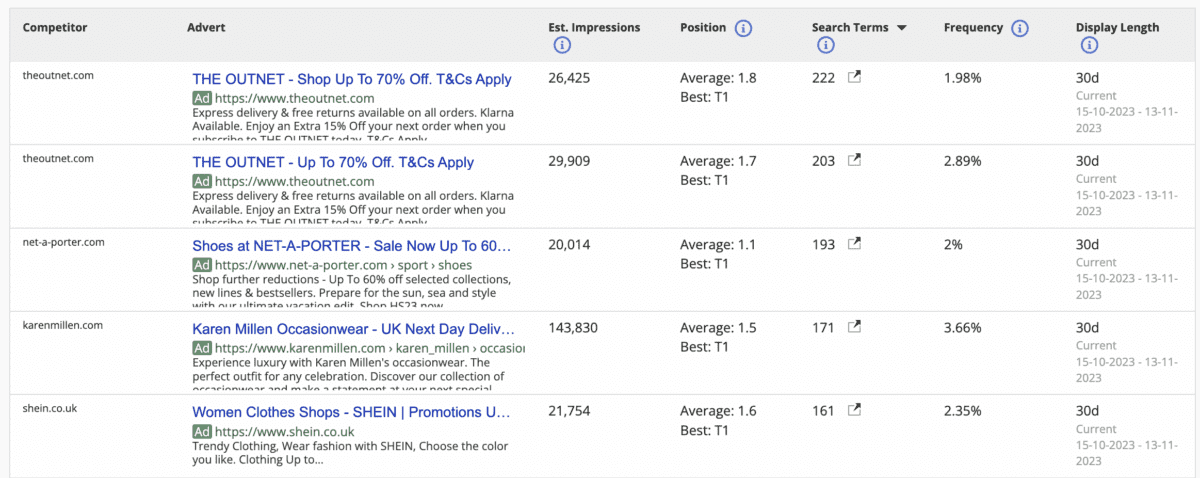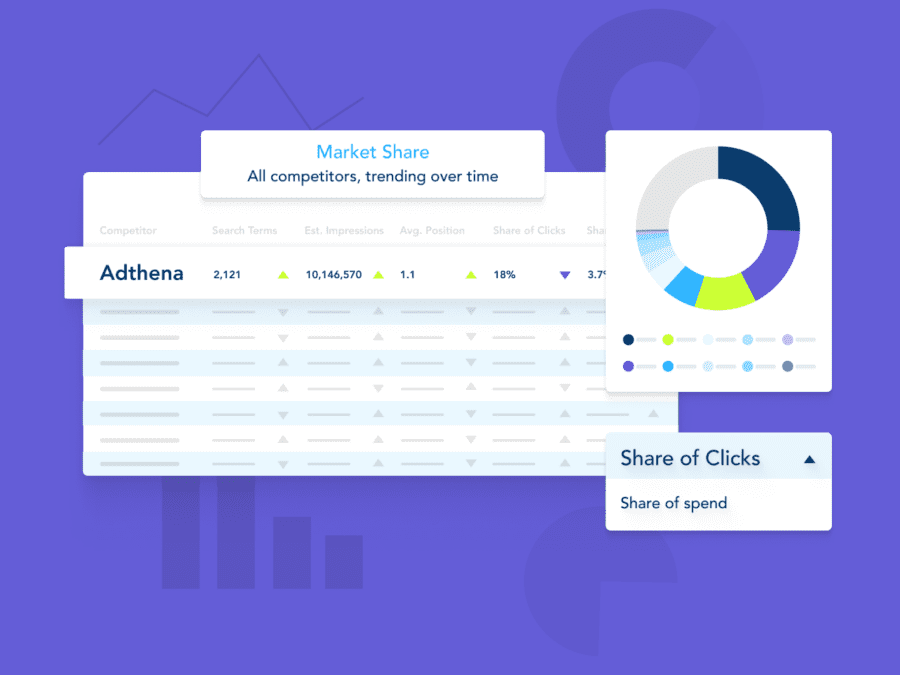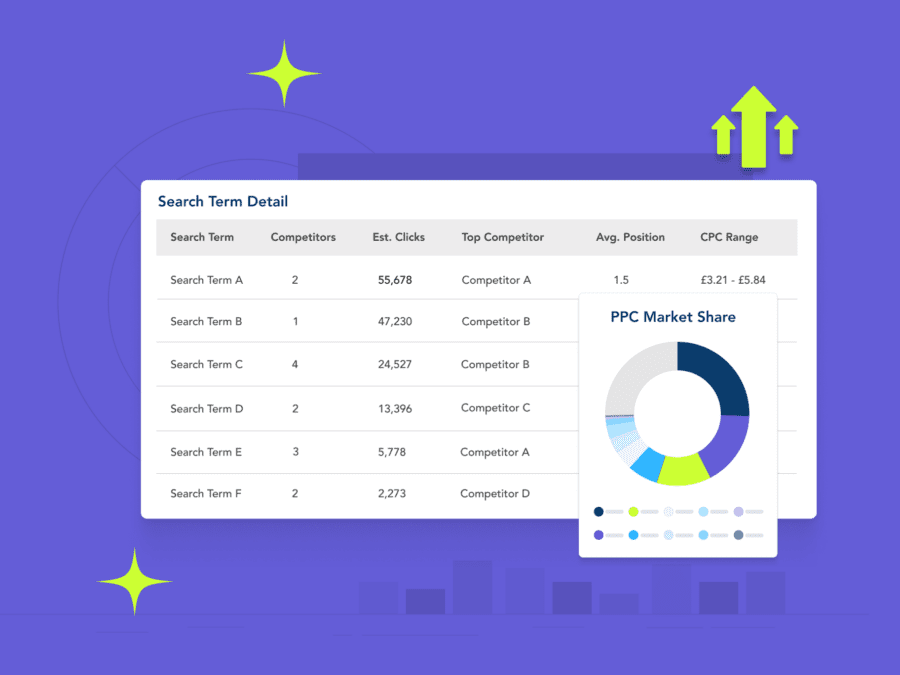Marketers rely on tools and platforms to provide them with insights to optimize their ad campaigns effectively. Two such tools in the digital advertising landscape are Google Ads and Adthena’s PMax report. In this blog, we’ll dive into a comparative analysis of these two sources of data to shed light on what they reveal about the world of digital advertising.
A closer look at data sources
Our analysis is focused on a specific category, Broadband, and spans a one-month period, from the 11th of September to the 10th of October. The PMax campaign we chose to analyze didn’t have any shopping activity associated with it, so it ran purely on all other placements.
We looked at Adthena’s search term detail report and compared it to Google’s detailed PMax search term report data.
A deep dive into key insights
We’ll now explore some key insights in greater detail such as shopping data, metrics, level of detail, and data quality and coverage, to help us to draw conclusions from our comparative analysis.
1. Shopping data
While this specific campaign didn’t run any shopping activity, it’s worth highlighting that Google’s detailed search term report for PMax doesn’t provide any insights into shopping activity; the data in the report relates to search only. In contrast, Adthena’s search term detail report includes paid search, shopping, and organic data, which can be viewed individually or aggregated.

Above: Adthena’s Search Term Detail showing specific search terms and its competitors in shopping data
2. Metrics
Google’s report provides impressions, click-through rates (CTR), and conversion metrics. Adthena’s report includes competitor count, estimated clicks, average position, CPC range, and the top competitor for each term. This range of metrics gives marketers a deeper understanding of their campaigns.

Above: Adthena’s Search Term Detail report showing key metrics for search terms triggering search ads
3. Level of detail
Google’s report offers a detailed search term breakdown for the campaign. Adthena takes it a step further by not only providing an overview of all terms but also showing which terms triggered specific ads, allowing advertisers to gain a better understanding of how different combinations are being served. Marketers can leverage this information to create ad copy that directly resonates with their target audience, compelling their audience to click through to the website.

Above: Adthena’s Top Ads report showing ads in the market appearing against fashion-related terms
4. Data quality and coverage
Our analysis of Google’s detailed PMax search term report for a 30-day period revealed some noteworthy findings:
Google’s detailed search term report identified a staggering 2,000+ terms, accounting for 9% of all impressions attributed to the PMax campaign. This raises questions about where the majority of impressions originate, especially when considering the typically higher impression rates from channels like display.
Surprisingly, despite the significant number of terms identified, 87% of them had zero clicks. In total, all the terms identified accounted for just 26% of the total clicks attributed to the PMax campaign. This begs the question of where the remaining 74% of the campaign traffic is derived from. While some portion may be attributed to activities beyond search, 74% seems exceptionally high. It appears that many traffic-driving search terms might be concealed or excluded from Google’s PMax report.
To test this hypothesis, we reviewed Adthena’s search term detail report. Using our methodology of matching this campaign’s PMax display URL to search term data, we found that 61% of search terms that we’ve seen this PMax campaign serve ads against were not included in Google’s search term detail report.
Bridging the gap
To gain deeper insights into the 75% of traffic not accounted for by Google’s detailed PMax report, we compared this data with Adthena’s findings. The outcome was remarkable, as 61% of the search terms identified by Adthena were not included in Google’s report. This revelation sheds light on where a significant portion of the campaign traffic might be originating.
This comparative analysis demonstrates the nuances and disparities in data provided by Google Ads’ detailed PMax search term report and Adthena’s PMax report. While Google offers a more extensive dataset, Adthena’s data may be more precise and relevant for certain advertisers. Understanding these differences is crucial for marketers aiming to optimize their ad campaigns and make data-driven decisions in the realm of online advertising.
Want to explore the Adthena platform? Take a self-guided tour now.




